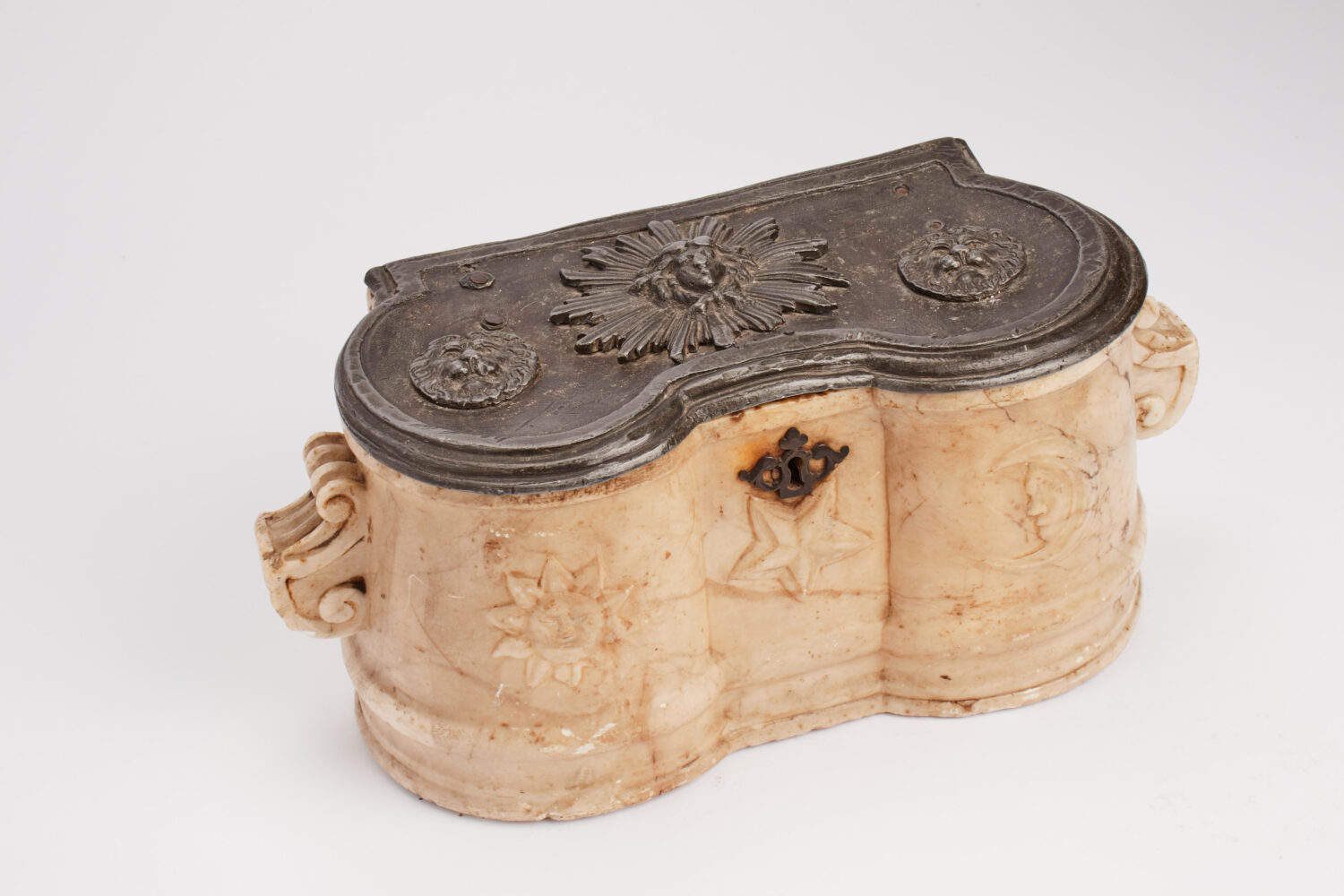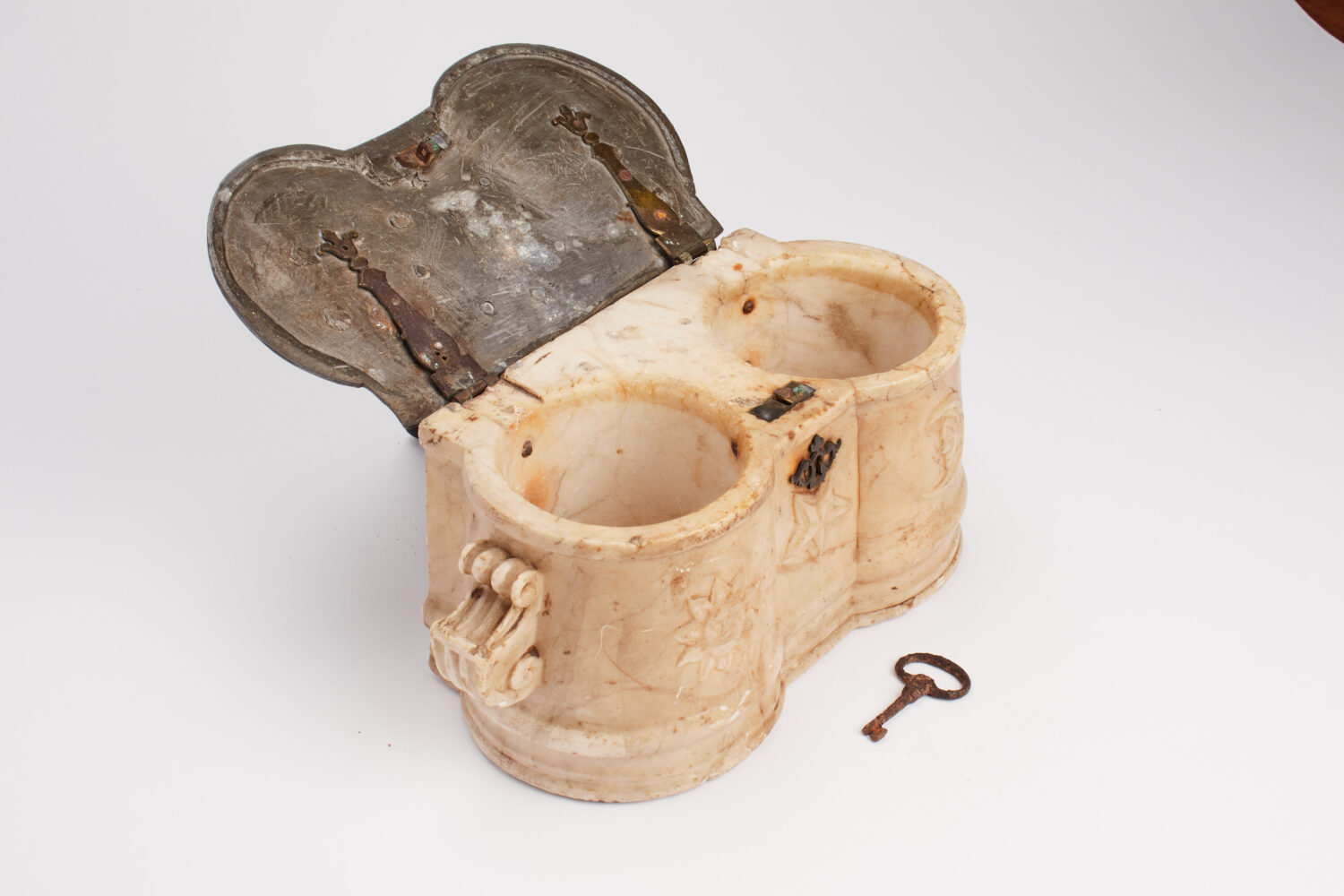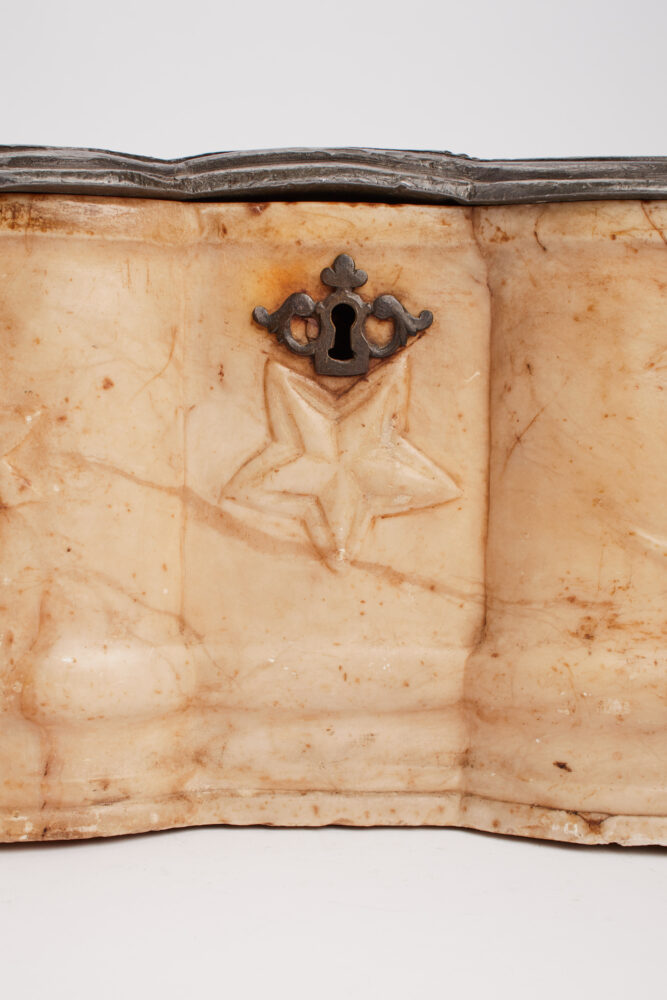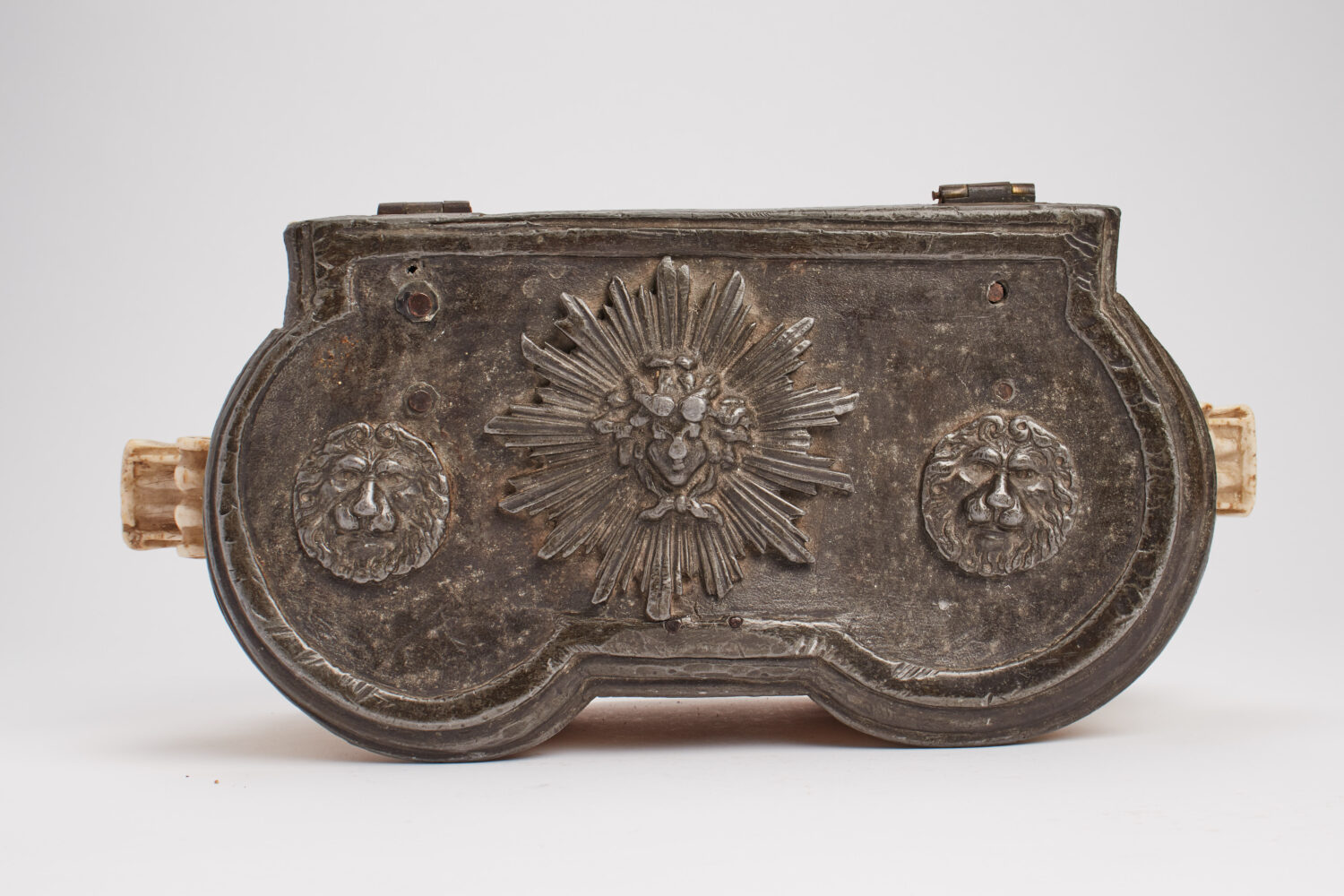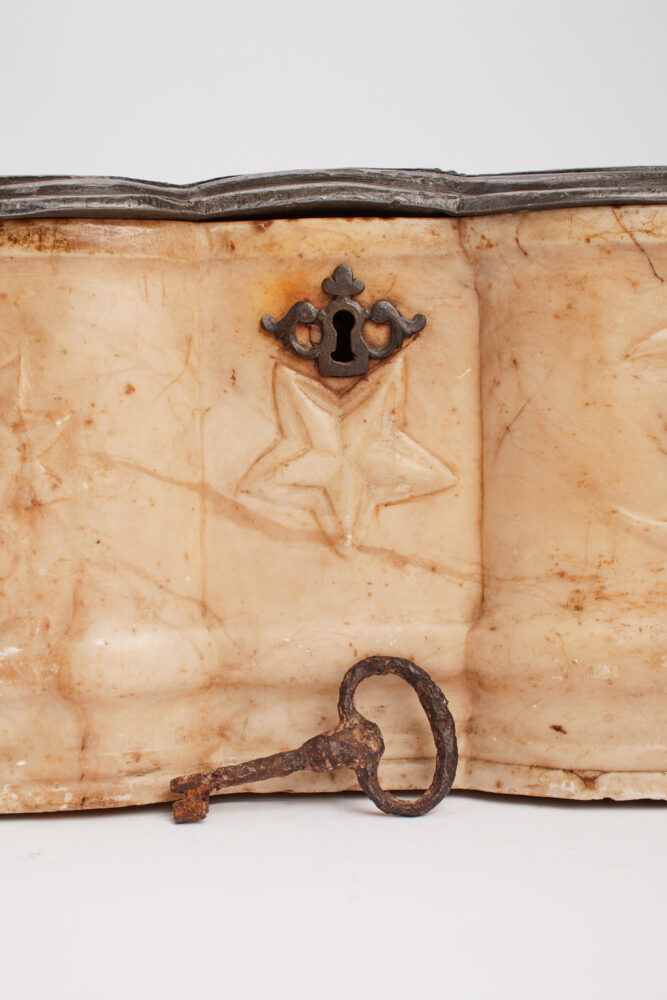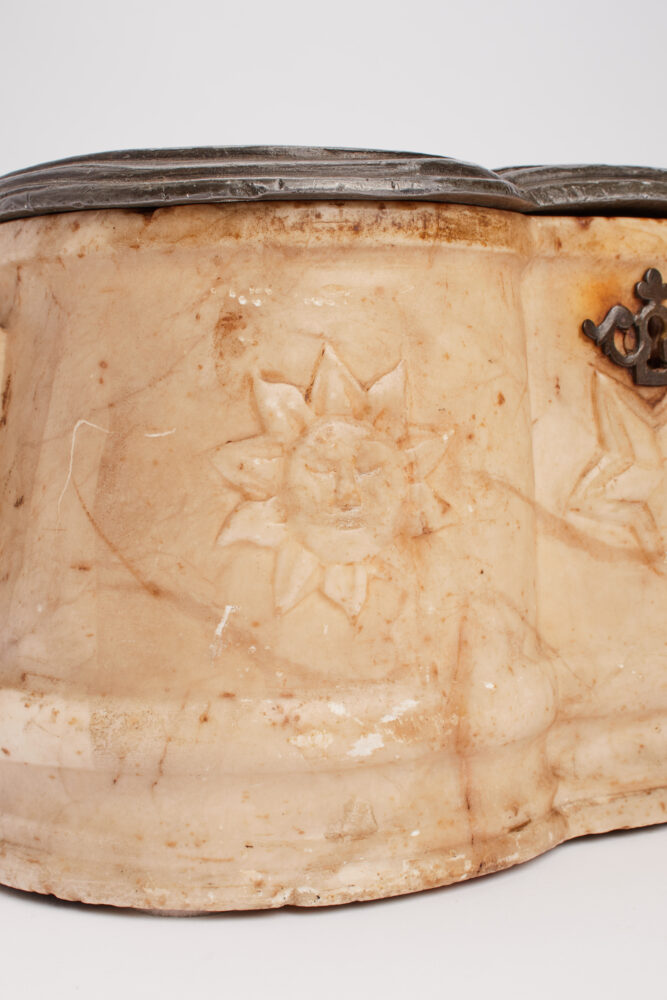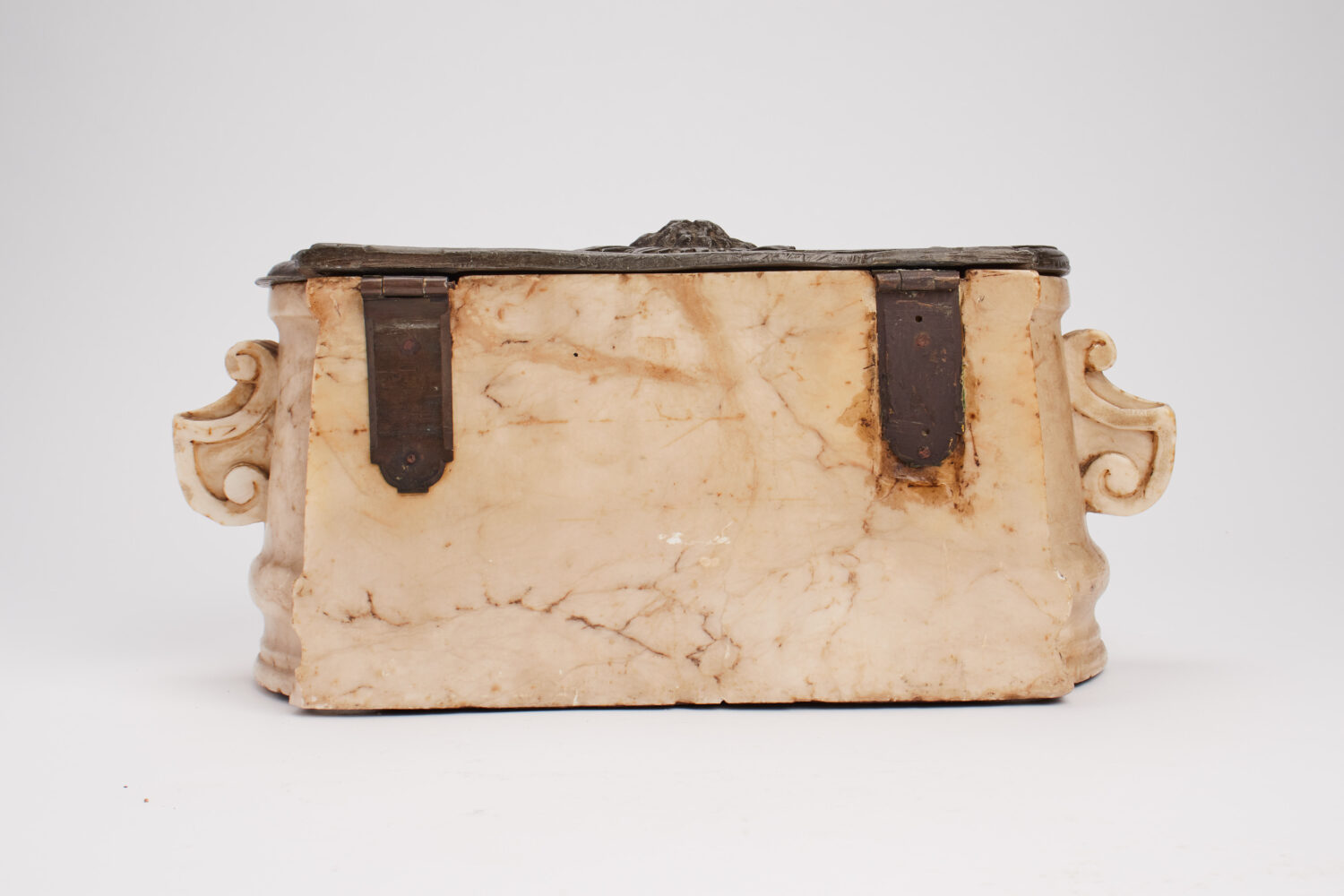French urn for organs, made of marble and lead, Louis XIV period. France 17th century.
France 17th century.
12900 EURO
An organ urn (in French often called coffret à viscères or boîte à entrailles), dating from the Louis XIV period (second half of the 17th century). It is a funerary container used to preserve the internal organs of a deceased person—typically of high rank—after the practice of evisceration, which was very common among nobles and royalty of the time.The body is made of light-colored marble with slight reddish veins, worked in relief. The shape consists of a double cylinder joined by a smooth central element. The lead lid is decorated in relief with a Medusa head with serpent hair and two intertwined snakes under the chin, set at the center of radiant beams. On either side are two frontal lion heads, typical of the Louis XIV period and associated with the “Sun King.”Along the front of the urn are the Sun, the Star, and the Moon—allegorical iconographic motifs that allude to time, eternity, the cosmic cycle, and spiritual rebirth, themes frequently found in Baroque funerary art. The double-scroll handles are in pure French Baroque style. The iron lock indicates the importance of the contents and the desire for protection. The context is that of 17th-century French noble funerary culture.
5” – 13 CM H 13” – 33 CM L 5,50” – 14 CM D
REF: M5864

